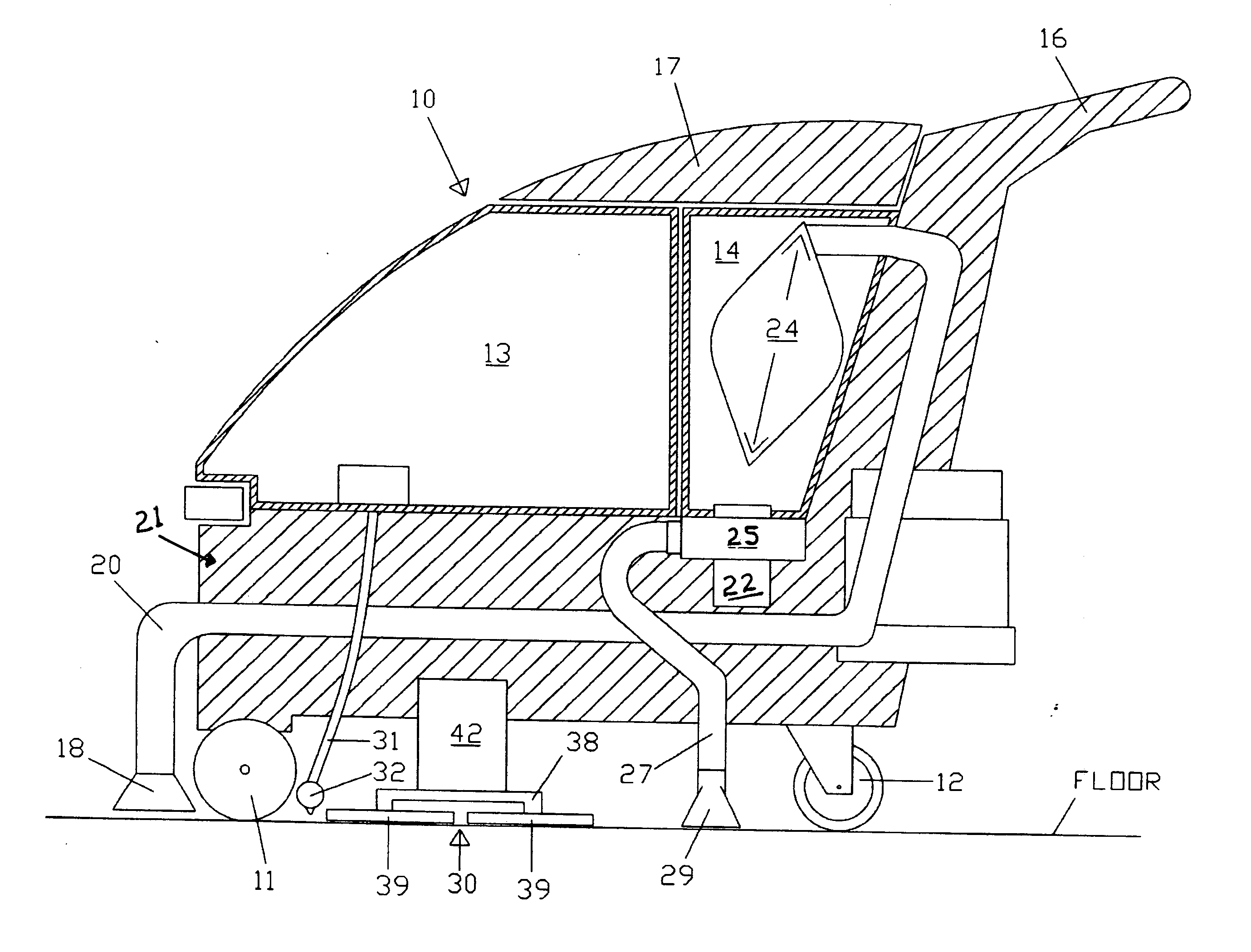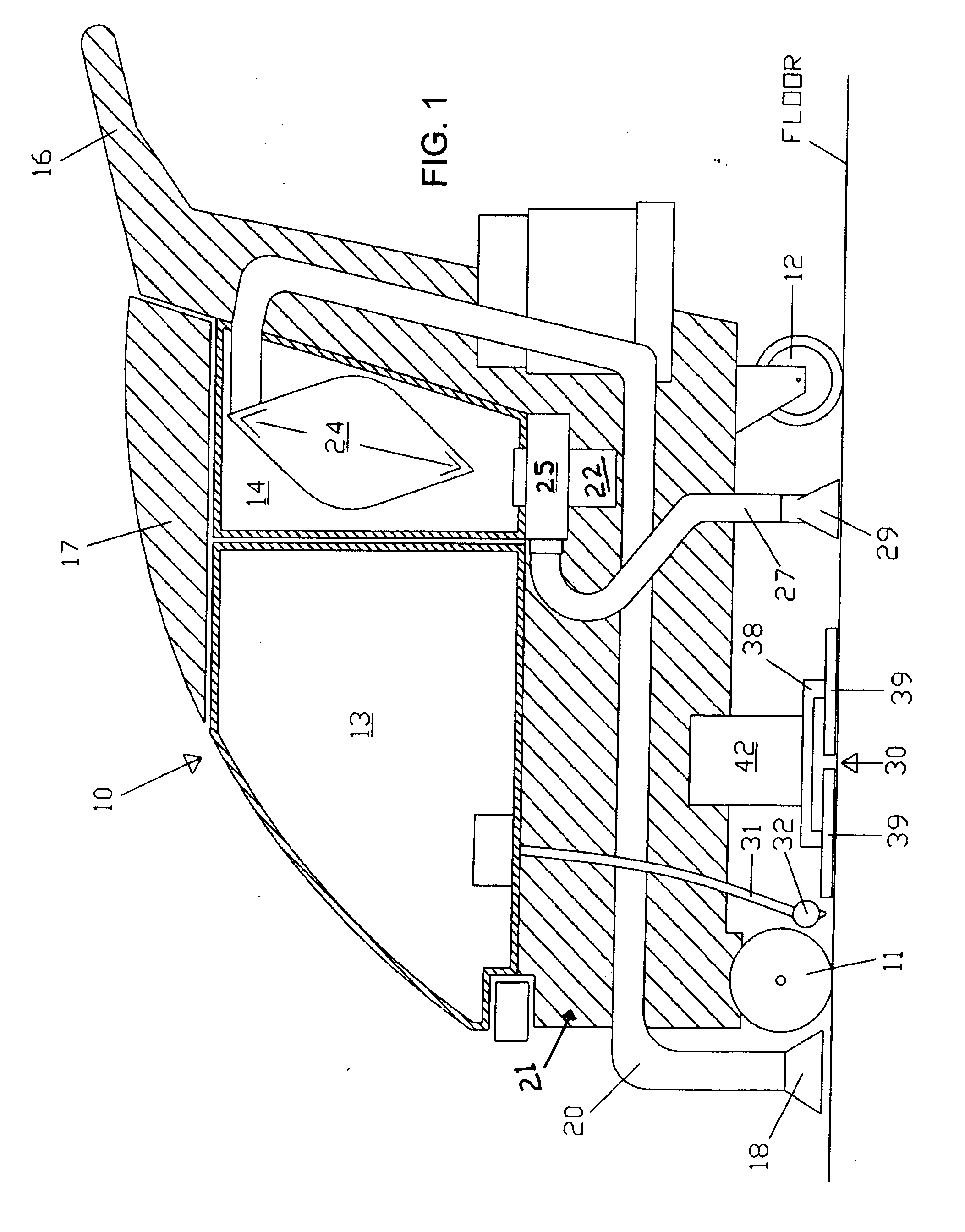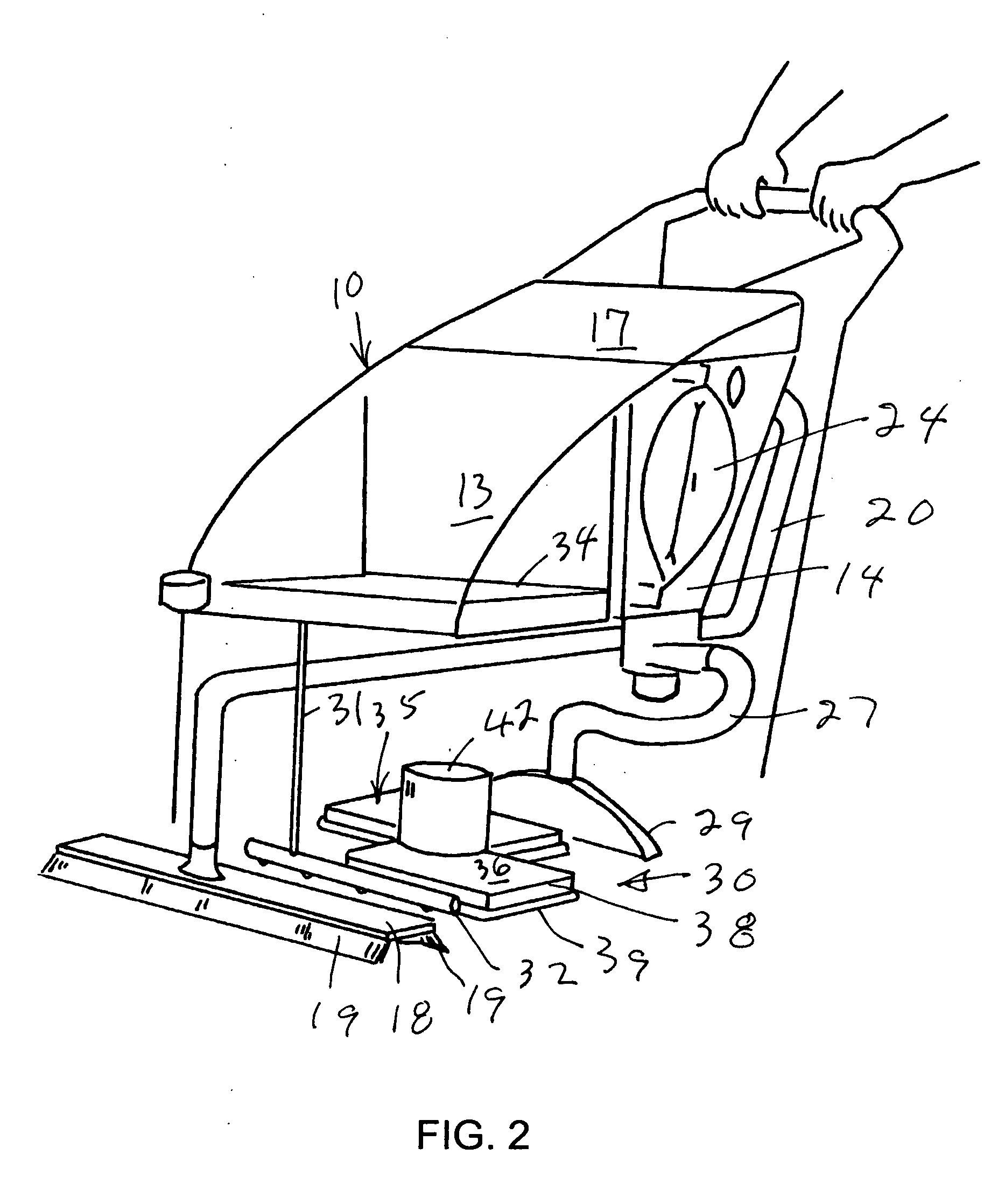Floor cleaning machine using microfiber pad
a floor cleaning machine and microfiber pad technology, applied in carpet cleaning, cleaning filter means, cleaning equipment, etc., can solve the problems of large volume of solution, large consumption of time, and high cost of automatic floor cleaning machines, and achieve the effect of a large machine in one embodimen
- Summary
- Abstract
- Description
- Claims
- Application Information
AI Technical Summary
Benefits of technology
Problems solved by technology
Method used
Image
Examples
Embodiment Construction
[0029] Referring first to FIG. 1, reference numeral 10 generally designates a floor cleaning machine using a microfiber cleaning element in the form of a pad. Machine 10 includes a pair of front support wheels, the left one of which is designated 11, and a pair of rear caster wheels, the left one of which is seen in FIG. 1 and designated 12. In smaller machines, the machine is designed to be pushed with the rear wheels being caster wheels, but in larger machines, the front or rear wheels may be traction driven, if desired.
[0030] The machine 10 includes a solution tank 13 and a waste tank 14 located behind the solution tank 13. The operator stands to the right of the machine as shown (that is, to the rear of the machine), where he has access to controls on a control panel 15, and controls the machine using a handle 16.
[0031] At the front of the machine, adjacent the floor, there is a vacuum pick-up nozzle 18 which is coupled to the waste tank or suction housing 14 by means of a con...
PUM
 Login to View More
Login to View More Abstract
Description
Claims
Application Information
 Login to View More
Login to View More - R&D
- Intellectual Property
- Life Sciences
- Materials
- Tech Scout
- Unparalleled Data Quality
- Higher Quality Content
- 60% Fewer Hallucinations
Browse by: Latest US Patents, China's latest patents, Technical Efficacy Thesaurus, Application Domain, Technology Topic, Popular Technical Reports.
© 2025 PatSnap. All rights reserved.Legal|Privacy policy|Modern Slavery Act Transparency Statement|Sitemap|About US| Contact US: help@patsnap.com



